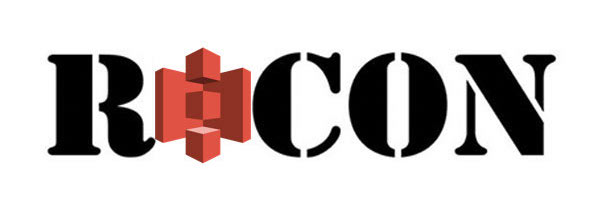Amazon S3 bucket finder and crawler.

NOTE: s3recon requires python version >=3.6
$ pip install s3recon
usage: s3recon [-h] [-o file] [-d] [-p] [-t seconds] [-v] [-c num] word_list [word_list ...]
positional arguments:
word_list read words from one or more <word-list> files
optional arguments:
-h, --help show this help message and exit
-o file, --output file write output to <file>
-d, --db write output to database
-p, --public only include 'public' buckets in the output
-t seconds, --timeout seconds http request timeout in <seconds> (default: 30)
-v, --version show program's version number and exit
-c num, --concurrency num maximum <num> of concurrent requests (default: # of lcpus)
The SecLists repository has a multitude of word-lists to choose from. For this example, let's download the sample word-list included in this repository.
$ curl -sSfL -o "word-list.txt" "https://raw.githubusercontent.com/clarketm/s3recon/master/data/words.txt"s3recon.Execute s3recon using the word-list.txt file and output the public S3 buckets to a json file named results.json.
$ s3recon "word-list.txt" -o "results.json" --public
- PRIVATE https://s3.sa-east-1.amazonaws.com/test-lyft
- PRIVATE https://s3.ap-south-1.amazonaws.com/test.amazon
+ PUBLIC https://walmart-dev.s3.us-east-1.amazonaws.com
- PRIVATE https://s3.ap-southeast-1.amazonaws.com/apple-prod
- PRIVATE https://walmart.s3.ap-southeast-1.amazonaws.com
...Check the results.json output file to view the S3 buckets you have discovered!
$ cat "results.json"{
"public": {
"total": 12,
"hits": [
"https://walmart-dev.s3.us-east-1.amazonaws.com",
"https://apple-production.s3.ap-southeast-1.amazonaws.com",
...
]
}
}Note: to include
privatebuckets in the results omit the-p, --publicflag from the command.
Enumerate the static files located in each bucket and record the findings.
Coming soon!
The SecLists repository has a multitude of word-lists to choose from. For this example, let's download the sample word-list included in this repository.
$ curl -sSfL -o "word-list.txt" "https://raw.githubusercontent.com/clarketm/s3recon/master/data/words.txt"$ docker run --name "mongo" -p 27017:27017 -v "mongodb_data:/data/db" -v "mongodb_config:/data/configdb" -d mongos3recon.Execute s3recon using the word-list.txt file and output to MongoDB instance.
$ s3recon "word-list.txt" --db
- PRIVATE https://s3.sa-east-1.amazonaws.com/test-lyft
- PRIVATE https://s3.ap-south-1.amazonaws.com/test.amazon
+ PUBLIC https://walmart-dev.s3.us-east-1.amazonaws.com
- PRIVATE https://s3.ap-southeast-1.amazonaws.com/apple-prod
- PRIVATE https://walmart.s3.ap-southeast-1.amazonaws.com
...Check the MongoDB database: s3recon collection: hits to view the S3 buckets you have discovered!
$ mongo "s3recon" --quiet --eval 'db.hits.find({}, {"url": 1, "access": 1, "_id": 0}).limit(5)'{ "url" : "https://s3.us-east-2.amazonaws.com/apple", "access" : "private" }
{ "url" : "https://s3.us-west-1.amazonaws.com/microsoft-dev", "access" : "private" }
{ "url" : "https://s3.us-west-1.amazonaws.com/dev-microsoft", "access" : "private" }
{ "url" : "https://s3.us-east-2.amazonaws.com/amazon", "access" : "private" }
{ "url" : "https://s3.us-east-1.amazonaws.com/dev-amazon", "access" : "private" }Enumerate the static files located in each bucket and record the findings.
Coming soon!
s3recon can be configure using a yaml configuration file located in either the current working directory (e.g. ./s3recon.yml) or your home diretory (e.g. ~/s3recon.yml).
The following is the list of configurable values:
# s3recon.yml
database: { host: "0.0.0.0", ... }
separators: ["-", "_", "."]
environments: ["", "backup", "backups", ...]
regions: ["ap-northeast-1", "ap-northeast-2", ...]To see the full list of configurable values (and their defaults) please refer to the s3recon.yml file in this repository.
The AWS regions can be altered by setting the regions array in your s3recon.yml configuration file.
# s3recon.yml
regions: [ "us-west-2", ...]The environments are modifiers permuted with each item of the word-list (and the separator) to construct the bucket value in request.
The value can be altered by setting the environments array in your s3recon.yml configuration file.
For example, to only search lines from the word-list verbatim (i.e. without modification) you can set this value to an empty array.
# s3recon.yml
environments: []The database host and port can be configured by altering the database map in your s3recon.yml configuration file.
For example, host and port can be set directly inside the database map
# s3recon.yml
database: {
host: "0.0.0.0",
port: 27017
}Sorry, at the moment only MongoDB is supported.
crawl command to crawl public/private buckets found in find stage.find and crawl as subcommands.This tools is distributed for educational and security purposes. I take no responsibility and assume no liability for the manner in which this tool is used.
MIT © Travis Clarke